Golfstead is reader-supported. When you buy through links on the site, we may earn an affiliate commission at no extra cost to you. Our affiliations include, but are not limited to, the eBay Partner Network and Amazon Associates.
No matter how old you are, it’s important to maintain your distance and accuracy off the tee by using a quality driver that suits your swing and your style of play.
It’s common knowledge that as you get into your 50s and beyond, your clubhead speed drops. You also tend to lose some of that sharp edge you had in your prime years that enables you to make consistently solid ball contact.
For this reason, most seniors benefit from lightweight driver heads and shafts that help them keep their clubhead speed up. They also tend to benefit from extra launch and added forgiveness.
In any case, if you’re a senior golfer, the large number of options on the market can make the process of choosing the best driver for you feel difficult and overwhelming. Fortunately, you’ve come to the right place.
In this guide, we’ll review and compare our picks for the best golf drivers for seniors across a range of different brands. These drivers may have been released for the most current golf season or any year prior.
Note: Golfstead has tested and/or conducted in-depth research into all of the products featured in this guide. Our editorial process for these rankings takes into account a mix of many factors which may include performance, reliability, usability, value for money, cost, and the general consensus from other users of the product. The list that follows may be reassessed or updated over time. We do not guarantee that other users will have the same or similar experience with the products as described on this page.
Our Top Picks For Drivers For Seniors
Based on our own testing, research, and experience, here are our top selections:
- Cobra 2024 AIR-X Offset Driver
- Titleist TSR1 Driver
- Callaway Paradym Driver
- Cleveland Launcher XL Lite Driver
- PING G430 MAX HL Driver
- Callaway Rogue ST MAX LS Driver
- Mizuno ST-X PLTNM 230 Driver
1. Cobra 2024 AIR-X Offset Driver
The AIR-X is Cobra’s highly praised lightweight offering for slower swingers. Not only does the stock shaft and grip have light weight in mind, but the driver itself has a lightweight construction which helps promote a faster, more effortless swing.
In addition to the extremely lightweight design at just 290g, the AIR-X driver is also engineered for fast ball speeds across the face and a draw bias. The 2024 model of the AIR-X (AIR-X 2) improves upon the original 2022 version with new H.O.T. Face technology designed to give a boost to mis-hit forgiveness.
The key features of the 2024 AIR-X Offset driver are:
- an A.I. H.O.T. Face that better optimizes spin and increases ball speeds across the face
- a lightweight construction consisting of a lightweight head, shaft and grip
- heel weighting designed to introduce a draw bias and help mitigate the right miss
- an offset hosel which works with the heel weighting to further encourage a draw shot shape and produce a better ball flight
The 2024 AIR-X Offset driver comes stock with the Cobra Ultralite 40 graphite shaft, and the stock grip is the Lamkin EPDM R.E.L. Black STD 58R.
| Lofts | 9°, 10.5°, 11.5° |
| Lie | 61° |
| Length | 46″ |
| Swing Weight | D1.5 |
Pros
- robust draw bias for fighting slices
- great distance and forgiveness across the face
- effortless feel throughout the swing
- easy to get the ball airborne
Cons
- might be too light for some
Final Thoughts
The Cobra 2024 AIR-X Offset is a great driver that, in our experience, has been a game-changer for many seniors who are losing clubhead speed.
With the 2024 model, Cobra essentially brought in the H.O.T. Face technology found in their AEROJET driver. This gives a nice little boost to ball speeds across the face compared to the original AIR-X, which many seniors are sure to appreciate.
If you’re not a fan of the offset, there’s also a Straight Neck variant which offers a more traditional look at address.
2. Titleist TSR1 Driver
You may think of Titleist as mainly catering to the professional crowd, but this isn’t really true; they also offer plenty more forgiving options that live up to the Titleist standard of quality.
The TSR1 is made of of very lightweight components, allowing golfers with low to moderate swing speeds to generate more speed through the ball and maximize distance. Its new face technology generates even more speed over the previous TSi1 model, and it’s also very forgiving.
The key features of the TSR1 driver are:
- Ultra-Lightweight Design: nearly 40 grams lighter than standard drivers, while still promoting a high launch and big distance.
- Multi-Plateau VFT Face: this new face tech builds the face inward layer-by-layer so that CT (Characteristic Time, a measure of energy transfer to the ball) across the face is nearly constant, thus significantly improving forgiveness.
- Face-Centered CG: the center of gravity of the TSR1 driver is positioned deep and almost perfectly centered to the face, resulting in a higher launch and ball speed.
- Hosel Adjustability: a SureFit hosel with 16 loft/lie combinations allows you to adjust and fine-tune the TSR1 driver to best suit your swing.
The TSR1 driver comes stock with the Mitsubishi MMT SPEEDMESH shaft. The stock grip is the Golf Pride Tour Velvet 360.
| Lofts | 9°, 10°, 12° |
| Lie | 59° |
| Length | 45.75″ |
| Hands | RH/LH |
Pros
- slightly better distance and forgiveness than the TSi1
- effortless launch
- slight draw bias is a nice touch
- modern, sleek aesthetic
- easy to swing
Cons
- has a relatively narrow appeal
- quite expensive
Final Thoughts
Like the TSi1 was, the Titleist TSR1 is consistently rated as one of the best drivers for seniors who have lost clubhead speed due to its light weight, easy launch, and fast face.
However, the TSR1 doesn’t have as much technological prowess as the other models in the TSR line. If you’re looking for even more forgiveness, we suggest the TSR2.
We should also mention that even if your swing speed is less than 90 mph, you may still have to experiment with the shaft/loft sleeve or even get a fitting in order to get the most out of this driver.
3. Callaway Paradym Driver
The Paradym is a new driver from Callaway that features a 360° carbon chassis, new A.I. Jailbreak system, and A.I. face.
This driver is built for high MOI, high launch, low spin, and adjustable perimeter weighting that will appeal to many seniors. It has an excellent customer score of 4.8/5 (100% recommended) on the Callaway store and won a gold medal on the 2023 Golf Digest Hot List.
The key technologies of the Paradym driver are:
- 360° Carbon Chassis: consists of a Triaxial Carbon Crown and forged carbon sole, saving 44% more weight than a titanium chassis. The saved weight is redistributed to increase MOI (and thus forgiveness) and maximize distance.
- A.I. Jailbreak Speed Frame: 33% lighter than previous designs, it vertically and horizontally connects the crown and sole to produce more ball speed and torsional stability towards the heel and toe.
- A.I.-Designed Face: optimizes launch, spin and ball speeds, and also improves downrange dispersion for more accuracy.
- Face Cup: featured in a driver for the first time, it further boosts ball speeds at every impact point across the face.
- Forged Titanium Face: works with the Face Cup to increase COR and energy transfer to the ball beyond what you would get with a standard driver face insert.
- Adjustable Sole Weight: a sliding 15g weight at the back of the sole can be slid towards the heel for a draw bias, slid towards the toe for a fade bias, or kept in a neutral position.
The Paradym driver comes stock with the ALDILA ASCENT PL Blue 40, Project X HZRDUS Gen 4 Silver 50 & 60, Project X HZRDUS Gen 4 Black 60, and Fujikura Ventus TR Blue 6 shafts. The stock grip is the Golf Pride Tour Velvet 360.
| Lofts | 9°, 10.5°, 12° |
| Lie | 57° |
| Length | 45.75″ |
| Hands | RH/LH |
Pros
- does everything really well
- super fast face and big distance
- wonderful forgiveness across the face
- sliding weight boosts versatility
- outstanding looks
- signature Callaway feel
Cons
- limited performance gains over Rogue ST MAX means an upgrade may not be worth it
- some degradation of sound & feel low on the face
Final Thoughts
The Callaway Paradym is ideal for seniors who are not necessarily looking for a lightweight driver that is high-spinning off the tee, but rather versatility and the very best in distance across the face.
Toss in great feel, looks, and sole adjustability, and there’s not much to criticize about this driver. It may only make marginal performance gains over its predecessor, the Rogue ST MAX, but you can only raise the performance bar so much.
4. Cleveland Launcher XL Lite Driver
Cleveland Golf is known to manufacture exceptional golf clubs and offer them at relatively affordable prices.
Their Launcher XL Lite is geared towards golfers with low or moderate swing speeds. It features a bonded hosel and lightweight shaft that are 12g lighter and 0.25″ longer than the standard Launcher XL, making it ideal for seniors. There’s also a shorter length option.
This driver consists of a high-MOI head with a low & deep CG, distance-enhancing technologies, and internal grip weight. The key technologies are:
- XL Head: the large head design has a low/deep CG with an MOI of 5100 g/cm². The result is forgiving stability, high launch, and superb distance.
- Rebound Frame: more energy is transferred to the ball at impact from alternating zones of flexibility and rigidity.
- Action Mass CB: an internal 8g weight at the end of the grip is designed to improve balance and control.
The stock graphite shaft is the Project X CYPHER 40, and the stock grip is the Golf Pride Tour Velvet 360.
| Lofts | 10.5°, 12° |
| Lie | 60° |
| Length | 46″, 45″ (AB) |
| Swing Weights | D1, C8 (AB) |
Pros
- light weight helps add clubhead speed
- highly accurate and forgiving
- tasteful aesthetic
- more affordable than comparable drivers
- solid feel
Cons
- only 10.5° has LH availability
- not the longest driver out there
Final Thoughts
As another special lightweight offering, you can’t go wrong with the Cleveland Launcher XL Lite. Even if you’re not a fan of the standard 46″ length, you can go with the 45″ Accuracy Build to add control.
The Launcher XL Lite delivers the modern, forgiving performance that senior golfers need. And the best part is that the price tag comes in at just $350, as opposed to $500+ for the popular brands.
5. PING G430 MAX HL Driver
The G430 MAX driver by PING has incredible forgiveness, an easy launch, and an adjustable sole weight, but not only that: compared to the previous-generation G425, it’s also longer and has the best impact sound we’ve seen in a PING driver to date.
The HL version of this model, which is what we’re featuring here, combines a lighter head weight (11g) with a lighter stock shaft and grip; it’s designed so that golfers with slower swing speeds, such as seniors, can boost their clubhead speed and distance.
The G430 MAX HL driver is packed with cutting-edge technologies:
- T9S+ Forged Face: this proprietary precision-machined, high-strength, variable-thickness face is 0.1″ shallower and 6% thinner than the face of the G425 MAX. This leads to even more face flexion at impact, thereby increasing ball speeds.
- Tungsten Movable Weight: this 11-gram backweight shifts the CG low and deep for high MOI. It can be moved into a fade, neutral or draw position.
- Spinsistency: this technology modifies the roll profile and optimizes face curvature, particularly low on the face. The loft low on the face is effectively reduced, which reduces spin and leads to longer drives.
- Internal Ribbing: a new and improved internal rib structure, along with a refined sole, skirt and crown, results in a considerably better impact sound than the G425.
- Crown Turbulators: these features are part of a special aerodynamic design that reduces drag for increased swing speed.
- Trajectory Tuning 2.0 Hosel: this lightweight, aerodynamic, adjustable hosel offers eight loft and lie combinations to fine-tune your trajectory.
The stock shaft is the PING ALTA Quick, and the stock grip is the Lamkin UTx Lite.
| Lofts | 9°, 10.5°, 12° |
| Lie | 58.5° |
| Length | 46″ |
| Swing Weights | D0, D1 |
Pros
- longer than the G425 MAX
- better sound than the G425 MAX
- unparalleled forgiveness
- lower spin than the G425 MAX
- super stable through the ball
Cons
- head shape is very long
- busy crown can be a bit of a distraction
Final Thoughts
For seniors looking for a lightweight, very forgiving driver that has a movable sole weight, the PING G430 MAX HL should be a top consideration. It might just blow your current gamer out of the water.
If you like this driver model but prefer to do without the lightweight components, you can always opt for the regular MAX build.
With PING clubs in particular, we do highly recommend a fitting if possible so that you know what configuration will work best for you. You also might be able to score a really good deal on eBay.
6. Callaway Rogue ST MAX LS Driver
We understand that many senior golfers don’t necessarily want to play a very lightweight driver. In fact, some can maintain impressive clubhead speeds and would do well with lower-spin, lower-launch drivers.
Enter the Rogue ST MAX LS (‘Low Spin’). This thing delivers big distance with high MOI, low spin, terrific feel, and workability. Its more compact profile at address appeals to many mid and low handicappers, and its weight characteristics promote a neutral ball flight.
The key technologies of the Rogue ST MAX LS driver are:
- Tungsten Speed Cartridge: a tungsten bar (23g) placed in the club’s sole shifts the CG low and deep in the head.
- Jailbreak A.I. Speed Frame: vertically and horizontally connects the crown and sole to produce more ball speed and torsional stability towards the heel and toe.
- A.I. Flash Face: designed through machine learning and made of high-strength titanium, the wave-like Flash Face produces faster ball speeds over a large area of the face, improves spin robustness, lowers spin, and increases launch.
- Titanium Unibody Construction: lowers the CG and adds stability.
- Triaxial Carbon Crown: allows for weight savings that are redistributed for more forgiveness.
The stock graphite shafts are the Mitsubishi TENSEI AV Blue (55g and 65g), Mitsubishi TENSEI AV White (65g and 75g), and Fujikura Ventus Blue 5 (non-VeloCore). The stock grip is the Golf Pride Tour Velvet 360. Custom options are available.
| Lofts | 9°, 10.5° |
| Lie | 57° |
| Length | 45.75″ |
| Swing Weights | D3, D4, D5 |
Pros
- plenty of distance with the right launch conditions
- maintains a very good level of forgiveness
- neutral flight bias and good workability
- more compact shape appeals to many
Cons
- no adjustability beyond Optifit hosel
Final Thoughts
What’s so great about the Callaway Rogue ST MAX LS driver is that while it does produce a nice penetrating flight with low spin, it still has great forgiveness which will help take the edge off those occasional poor strikes.
At the same time, the driver offers good workability, so if you’re someone who likes to shape your tee shots, you won’t be displeased.
7. Mizuno ST-X PLTNM 230 Driver
While Mizuno is a brand that tends to be forgotten amongst the hype for other brands such as Callaway, Cobra and TaylorMade, they really do make some of the best golf clubs in the world.
The main selling points of their ST-X PLTNM (Platinum) 230 driver are a high launch, draw bias, and light weight that suits slower and moderate swing speeds such as what a senior might have. In fact, this model is 30g lighter than the lightest possible custom configuration of the ST-X 230.
Features of the ST-X PLTNM 230 driver include:
- CORTECH Chamber: an elastomeric thermoplastic polyurethane (TPU) encases a dense 3g stainless steel weight. This creates an additional energy source for more ball speed, prevents excessive spin, and produces a more powerful impact feel.
- Forged SAT2041 Beta Ti Face: this highly resilient titanium resists micro-fractures and maintains its structure for consistently high ball speeds. The latest iteration has a complex multi-thickness design that is enabled by the CORTECH Chamber.
- Unified Sole Composite: the carbon sole plate of the ST-X PLTNM 230 is now a single piece. This allows weight to be pushed to the perimeter for added stability.
- Heel Weight: weight in the ST-X PLTNM 230 is concentrated in the heel area, closer to the shaft axis, to generate a draw bias and high flight.
Mizuno offers an array of shaft options for the ST-X PLTNM 230 driver at no upcharge. The stock shaft is the lightweight UST Mamiya HeLIUM PLTNM 40 F2, and the stock grip is the Mizuno J112.
| Lofts | 10.5°, 12° |
| Lie | 59°-62° |
| Length | 45.75″ |
| Hand | RH |
Pros
- draw-biased yet forgiving and consistent
- nice neutral look at setup
- fantastic aesthetics
- super solid “Mizuno feel”
Cons
- no LH availability
- not much different from the previous ST-X 220 model
Final Thoughts
The Mizuno ST-X PLTNM 230 is a very worthy option in the realm of lightweight game-improvement drivers.
Mizuno has taken a different approach in their marketing by avoiding emphasizing “forgiveness” or “distance” unlike most other brands. Regardless, the driver sets up nicely behind the ball, is easy to launch, takes the edge off slices with a draw bias, and is very stable in mis-hit regions.
The biggest issue in our eyes is that it’s only available in RH, so if you’re a lefty, you can pretty much forget about it.
Buying Guide
There are many drivers on the market, and knowing which one to choose as a senior isn’t necessarily easy, especially if you’re not sure what to look for. This guide will provide you with the education you need in that regard.
In general, you should choose a driver that is light enough to enable you to generate a good amount of clubhead speed, and that provides a healthy amount of forgiveness.
If you want to find the right driver, here are the most important factors to consider:
1. Swing Weight

As a senior, you want to pay attention to the swing weight of your driver, since this will affect your tempo, ability to control the club, and the amount of clubhead speed you can generate.
Swing weight refers to how the weight of the driver “feels” through the swing and takes into account the weight of the clubhead, shaft and grip. It’s not measured in the traditional sense (i.e. grams or pounds); instead, it’s measured on a scale from A-G with ten increments of 0-9 within each letter category.
As you move from A to G and from 0 to 9, the swing weight gets heavier, so A1 is extremely light while D9 is very heavy. Most men’s swing weights range from around D0-D2 and most women’s range from around C5-C7.
As a general rule, drivers for seniors should fall in the C or D range. Lightweight drivers, many of which are featured on this page, should fall nicely in this range.
Take note of the swing weight based on the driver’s stock shaft (or whatever shaft you plan to use with the driver), and determine if it would be appropriate for you based on what you know about your swing. The weight of the club should feel balanced, but more than that, it should not be too heavy or too light, as both situations will negatively impact your performance.
2. Forgiveness

Forgiveness tends to become more important for seniors as their ballstriking consistency starts to decline.
Having a degree of forgiveness in a driver is highly beneficial because at these high swing speeds, minor mis-hits can be amplified into very poor results. Avoiding the rough as much as possible will make a big difference in your scoring.
Forgiveness can be divided into two subtypes: ball speed forgiveness and directional forgiveness.
Ball speed forgiveness refers to the amount of ball speed that is preserved in mis-hit regions (towards the toe or heel) relative to the center of the face. Most modern drivers strive to maximize speed across the entire face so that even moderate mis-hits might result in only a few yards of lost distance.
Directional forgiveness refers to how far a shot deviates from the target line when struck in mis-hit regions. This is closely related to a quantity called moment of inertia, or MOI.
The higher the MOI, the more the club is resistant to twisting at impact when the ball doesn’t make contact at the center of mass. The more the club (and hence the face) resists twisting at impact, the closer to the target line the ball will start and the less ball speed will be lost.
Many drivers have high MOI as a selling point. This will certainly add stability to your shots and help you find more fairways, but you tend to get reduced distance and higher backspin as a tradeoff.
3. Distance

Of course, every golfer wants more distance off the tee. Seniors, in particular, lose clubhead speed as they age and should try to preserve their length. A longer drive will enable you to hit shorter, more precise shots into the green.
Even if you miss the fairway, it turns out that distance contributes more to strokes gained driving (about 60%-65%) than accuracy does. So, however you slice it, distance is hugely important, especially in a world of lengthening golf courses.
Most modern drivers have distance as their primary focus. The two main quantities that lead to more distance are ball speed and clubhead speed.
Ball speed is the speed of the ball immediately after impact with the club face. Obviously, higher ball speed results in more distance. One of the primary factors that affect ball speed is a number called the coefficient of restitution, or COR.
COR is a measure of how much energy is transferred from the club to the ball at impact. The higher the COR, the higher the ball speed. The value can technically be between 0 and 1, but current USGA rules prohibit it from being any higher than 0.83 in golf clubs.
Clubhead speed is the speed of the club at the moment of impact. Manufacturers typically increase this through certain club aerodynamics which allow the club to move faster and more efficiently through the air.
In short, driver manufacturers strive to maximize COR across the club face and optimize aerodynamics to maximize speed. For the longest drivers, they also try to minimize spin which further increases distance.
4. Shaft

The shaft can make or break your success with a driver. Graphite shafts have pretty much become the norm for today’s drivers (as opposed to steel shafts) because their increased torque, increased flex, and lighter weight help promote launch and speed.
Having said that, choosing the right shaft is a highly individual matter. These days, manufacturers pair drivers with one or more stock shaft options that tend to appeal to a wide range of golfers, but custom shafts are usually available as well.
The two main things to keep in mind when choosing a shaft are the weight and the flex.
If a shaft is too heavy for you, it will likely result in less control, less club head speed, and an excessively low launch. If a shaft is too light for you, it can result in excessively high launch and spin as well as a lack of precise contact with possible deceleration in the downswing.
The shaft flex that suits you is generally dependent on your swing speed, with lower swing speeds calling for more flex and higher swing speeds calling for less flex. Here’s a guideline:
| Driver Swing Speed | Suggested Shaft Flex |
|---|---|
| Greater than 105 mph | Extra Stiff |
| 96-105 mph | Stiff |
| 84-95 mph | Regular |
| Less than 84 mph | Senior or Ladies |
As the name implies, senior flexes are geared towards senior golfers. Not every senior will be best suited for a senior flex, but it’s a good starting point for someone who doesn’t otherwise know the type of shaft they play best with.
5. Impact Feel
One factor that can affect how likely you are to make a good swing is how the driver feels at impact.
You ideally want impact to feel solid and like the ball is exploding off the face. This will tend to give you more confidence and increase your speed through the shot. A hollow or “tinny” sound can work against this.
You also need to consider how much the feel degrades as the impact moves away from the sweet spot towards the mis-hit regions. Some seniors will want mis-hit feel to be relatively forgiving, while others will want clear feedback on where the ball made contact with the face.
There is a balancing act at play between consistent feel across the face and clarity of mis-hit feedback. Achieving a balance that you’re satisfied with will go a long way.
6. Price

Drivers are pretty expensive these days, and not everyone can afford ones that cost $600 or more. Fortunately, there are options that cost well below this amount.
As a general rule, the older the driver model, the better the deals you can find on it. And it’s not at all uncommon to find that you perform better with a $300 driver than a $600 driver.
You certainly don’t have to get a current-season driver. But the problem is that as time passes, availability of a particular model gets more limited, and eventually, you lose the ability to order it custom. At that point, you may only be able to get it used. In general, we don’t recommend drivers that are more than three seasons old.
In this guide, we have included driver models that span a range of different prices and brands. But the great thing is that there are ways to reduce both the final cost and risk of the purchase.
For example, one of our top recommended online golf equipment stores, Global Golf, offers club trade-ins as well as a program called Utry that lets you try a driver before you buy it. There has never been this much allowance for finding your ideal clubs, and you should take advantage.
Conclusion
A reliable, quality driver can be a huge boon to a golfer’s toolkit. Finding a model that does the job you want it to do as a senior is certainly possible with some research.
Senior golfers can play any driver successfully, but they often seek out lightweight drivers with good forgiveness. Because seniors tend to have a slower swing speed, they will usually play a more flexible shaft as well.
The best way to find a driver that you do really well with is to simply try it. Buying it off-the-rack is fine, but if possible, we recommend a fitting so that you understand what your best configuration is.
Each of the driver models reviewed above deliver exceptional performance. We’ve given you the information you need to make a decision; now it’s up to you to go the rest of the way.
It is highly recommended to read consumer and professional reviews to acquire some useful insights as to how driver models actually perform. This will help you a lot in the decision-making process.
Thanks for reading this guide. Which driver are you interested in as a senior? Do you have any questions? Feel free to leave a comment down below.


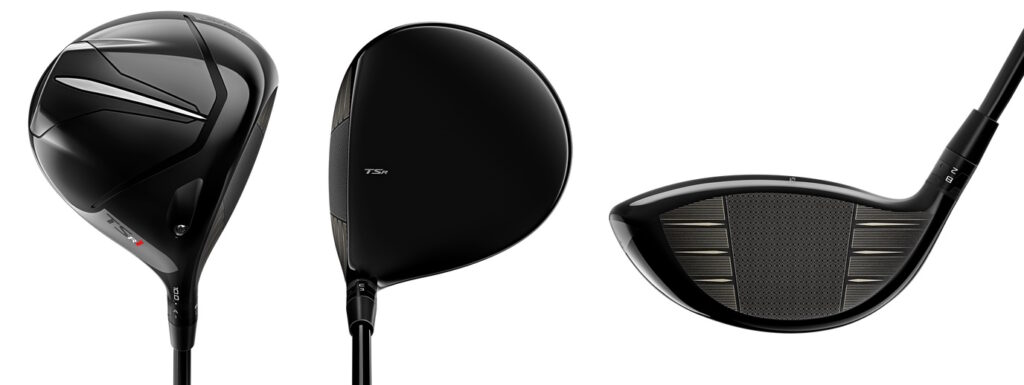

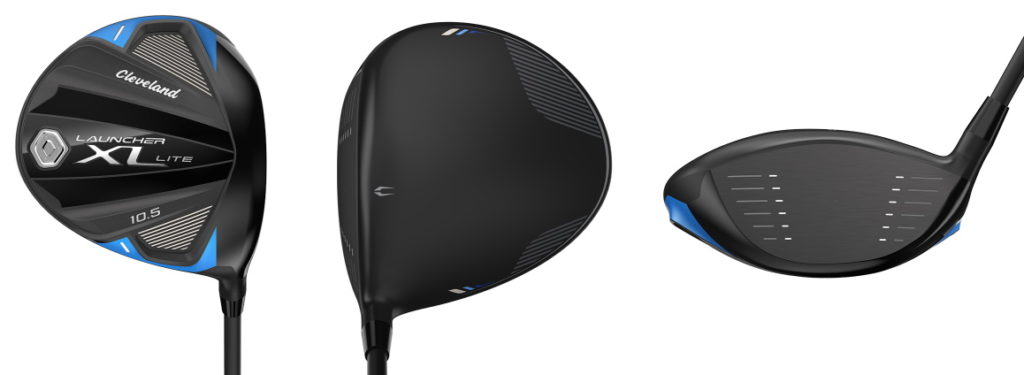

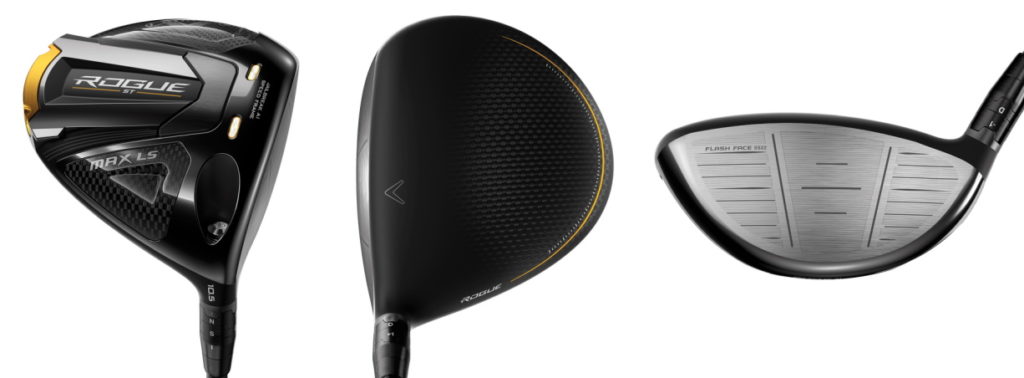
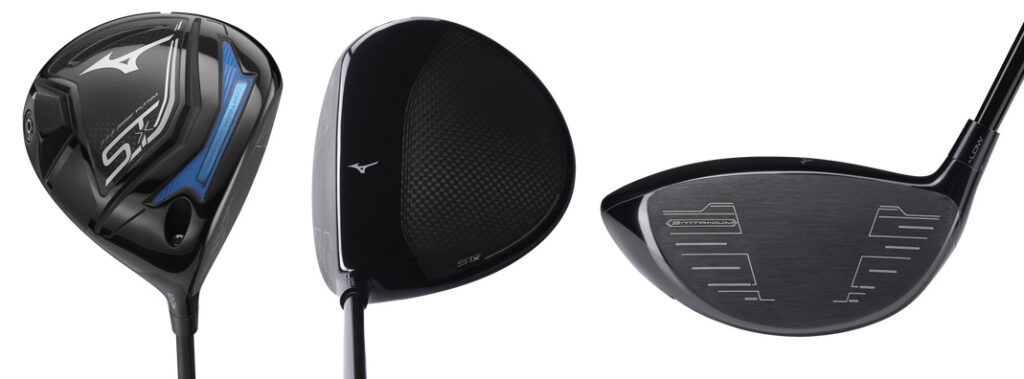
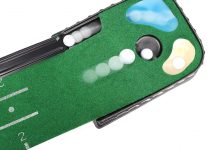

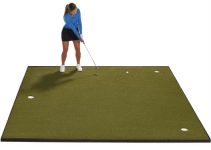
Thanks , looking for a new driver . 69 yrs old , 6-3 bad back . Old driver Taylor RZ7 senior Sharf . Speed 75-85 . Fix income . US ARMY Veterans
Tough for me to make a recommendation without more information. If you’ve had success with TaylorMade, perhaps you could try the Stealth 2 HD or Stealth 2 Plus with a senior shaft. At the end of the day, you’ll have to see what works for you among the latest models.